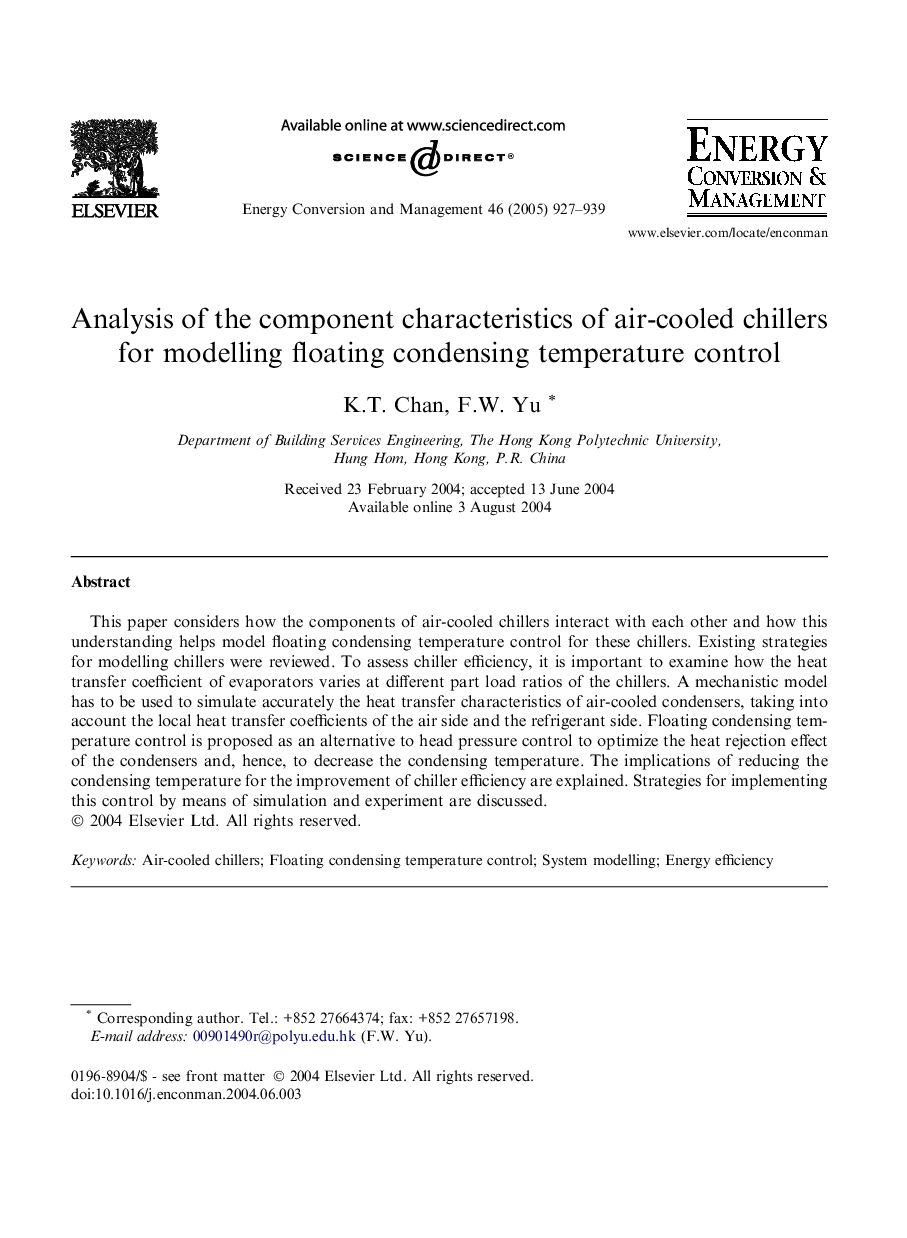| Article ID | Journal | Published Year | Pages | File Type |
|---|---|---|---|---|
| 10415888 | Energy Conversion and Management | 2005 | 13 Pages |
Abstract
This paper considers how the components of air-cooled chillers interact with each other and how this understanding helps model floating condensing temperature control for these chillers. Existing strategies for modelling chillers were reviewed. To assess chiller efficiency, it is important to examine how the heat transfer coefficient of evaporators varies at different part load ratios of the chillers. A mechanistic model has to be used to simulate accurately the heat transfer characteristics of air-cooled condensers, taking into account the local heat transfer coefficients of the air side and the refrigerant side. Floating condensing temperature control is proposed as an alternative to head pressure control to optimize the heat rejection effect of the condensers and, hence, to decrease the condensing temperature. The implications of reducing the condensing temperature for the improvement of chiller efficiency are explained. Strategies for implementing this control by means of simulation and experiment are discussed.
Related Topics
Physical Sciences and Engineering
Energy
Energy (General)
Authors
K.T. Chan, F.W. Yu,
